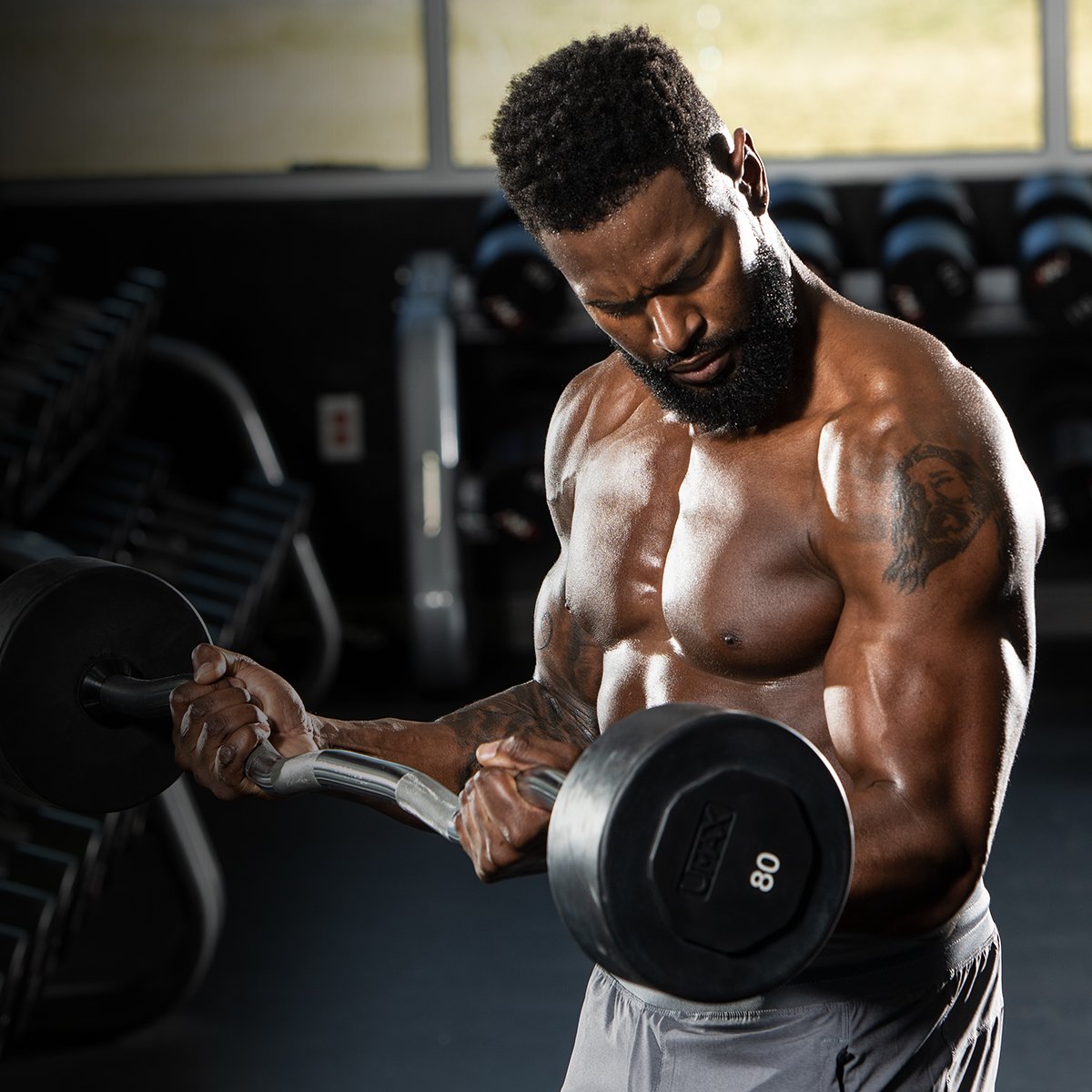
The Blueprint to Cut: Old-School Shredding Essentials
You may know how to grow, but do your results show? Get the knowledge you need to redefine muscle definition!
Main | Training Overview | Nutrition overview
Supplementation Overview | Get Started
There was a time in history when carrying an epic amount of muscle mass was enough to stand out. But stripping away body fat and revealing quality, chiseled mass underneath is something every lifter should experience.
What are you competing against, you ask? It's simple: everything in your life that's trying to keep you soft. Maintaining a layer of body fat makes you feel bigger than you are. It can even become a crutch that allows you to avoid making difficult dietary choices and avoid training intensely or doing—ugh—cardio.
The Blueprint to Cut is the answer you've been avoiding. If you loved The Blueprint to Mass, you'll feel right at home here, and you'll get results that enhance everything else you've been doing in the gym for the last few years. One glance in the mirror during Week 8 and it will all make sense.
Get back to your bodybuilding roots and redefine your definition! Follow the full Blueprint to Cut in BodyFit Elite. Not only can you track your workouts, weights, and rest periods, you can also swap out lifts to match your equipment, and even watch demonstration videos of every movement in every workout from BodyFit's new and improved exercise database.
Blueprint to Cut: The Training Program
Your eight weeks of training will be split into two four-week phases. Each week you'll hit chest, back, and legs twice, and during the second four weeks, you'll work shoulders and arms twice a week, as well.
If you find you're having trouble fitting all the volume into your customary workout time, consider trying two-a-day workouts, where you train the big-gun muscles during the morning or early in the day, and do detail work at night. These are the most common muscles to train at night in this approach:
- Calves
- Arms (biceps, triceps, forearms)
- Abs
The movements you'll be following in this program are many of the same ones that power The Blueprint to Mass. Expect to use big lifts with barbells and dumbbells, plus a light amount of machine work. More important than what you'll do is how you'll do it. Here are the rules that will guide you:
- Focus with intense concentration on isolating each area of every single muscle.
- Use a wider range of intensity training principles and a wider variety of exercises than when adding mass.
- Increase the total number of sets and weights in your workout sessions.
- Whenever possible, reduce your rest time between sets by doing things like supersets and trisets.
- Make significant changes in your diet.
- Flex the target muscle between sets.
- Consider finding a training partner to help focus your energies on creating super-intense workouts.
Those seven rules will make all the difference.
Intensity Techniques
Some of this program's intensity boosters will be familiar if you followed The Blueprint to Mass trainer. Others might be new. Remember, "shock methods" like these are even more important when cutting than while building!
Supersets and Trisets
A superset is simply two exercises performed back to back without rest. A triset or giant set is any series of exercises greater than two performed without rest between exercises.
1-10 Method
After a warm-up set or two, find a weight you're only able to lift for 1 rep. After you perform that 1 rep, take just enough weight off to perform 2 reps. From there, do the same for 3 reps and 4 reps, going all the way up to 10 reps. This is brutal because the only rest you get is when you're unloading the weights.
Stripping Method, "Strip Sets," or Dropsets
No matter what you call them, they're intense and they work. Immediately after your final working set, take some weight off the bar or stack and lift for another 5-10 reps. Then, with no rest, keep repeating this process. Reduce your weight, lift, reduce again, lift, and continue until you're down to the bar. Once you're down to the bar, lift for 20 reps.
1/4-Rep Method
You could also call this the "1-1/4-rep method," to distinguish it from the type of quarter-reps you might see in the gym on a daily basis. Perform the complete eccentric (weight-lowering) portion of a movement. Then, raise the weight only a quarter of the way back up, lower it back down again, and perform a complete rep.
Running the Rack
Running the rack was a well-known favorite dumbbell technique of the old-school bodybuilding legends. It's simple to perform: Just go to failure with your prescribed weight, then put the weight down and pick up the next lightest in line. Repeat the process until you're exhausted.
5-Count Method
Time your lifts and make both the lowering and raising halves of the lift last 5 seconds apiece. Those last few reps will definitely show on your face!
28 Method
You probably know how to do 21s: 7 top-half reps, 7 bottom-half reps, and 7 full reps. The 28 method adds a new level of intensity by changing up the order and adding in an additional 7 super-slow reps using the 5-count method, where you make both the raising and lowering portions of the rep last 5 seconds apiece. Here's the order: 7 full reps, 7 slow reps, 7 top-half reps, 7 bottom-half reps.
Running
You may have seen this on the main Blueprint to Cut page, but we're putting it here again out of fear that you'll find an excuse to ignore it otherwise. Throughout this program, your assignment 3-5 times a week is to run 1-2 miles as fast as possible. Seriously! Push the pace, get it done, and get leaner. Don't worry, you won't lose any muscle in the process.

